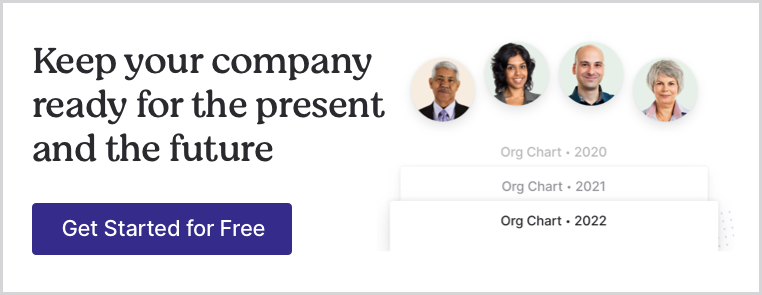If you haven’t thought much about organizational alignment, it may be helpful to consider the impact of having every employee and team operating in harmony with the company’s most important goals and objectives. Organizational alignment drives improved employee engagement and performance, and also offers positive returns for the organization. One research study found that when employees are aligned with the company’s mission, values, and goals, they’re more likely to be engaged at work.
Levels of Organizational Alignment
There are many ways that you achieve organizational alignment. To see its value, first it makes sense to discuss the key levels of alignment that can exist in the organization:
Individual Role Alignment
An initial step toward organizational alignment is effectively matching individuals and their strengths and capabilities to the right roles. Just as a quantitative-minded employee might not be the best fit for a creative design role, a salesperson wouldn’t be a perfect fit for an accounting position. The same is true when it comes to reporting structures. The skills and experience of the manager should properly align with the individuals that report to him or her.
Alignment Between Teams
For an organization to realize the maximum value of individual contributions, teams within the organization need to be properly aligned to each other so that they understand how their respective activities work together for the benefit of the company.
As an example, marketing team activities should be aligned with sales activities in order to ensure customers receive a clear message of the value the company offers. Without this important alignment between teams, the company risks losing business. A number of studies have found that fully aligned sales and marketing teams realize benefits such as improved customer retention and higher rates of meeting revenue targets.
Alignment of People to Organizational Mission and Goals
Employees need to understand how their individual goals and activities align with the company’s strategic goals. To ensure that everyone is moving in the same direction, employees need to understand how they can personally help to achieve the overall goals of the business and how those goals link back to the company vision and values.
Benefits of Organizational Alignment
Organizational alignment impacts every individual and team, and also has broader implications for the long-term success of the company. Here are some key benefits of organizational alignment to get you thinking:
Improves Change Management
Any organizational change effort requires that employees have clear goals and responsibilities and that they know how their work contributes to the overall success of organizational change. When individual goals align with organizational change efforts, there is also less likelihood of duplicated efforts or employees behaving in ways that contradict change management objectives.
Supports Strategy Execution
While creating the right strategy can be a challenge, executing that strategy can also be difficult. However, when individual goals align with organizational strategy, there’s a greater likelihood that the things employees are working on tie back to that strategy. One Forbes article goes so far as to name alignment as the key component of any successful strategy execution and identifies the lack of alignment of employee goals with strategic goals as a top reason for failure to execute.
Improves Employee Engagement
Employee engagement rises when employees feel connected to the broader organizational mission. According to Gallup surveys, 85% of employees are disengaged at work. But Gallup also points out that when employees feel aligned to the identity of the company (its vision, values, and culture), they are more likely to be engaged and perform better.
Encourages Innovation
When individual goals align with broader organizational values and goals, employees will be more inclined to engage in activities that help the company grow. As an example, a firm seeking to drive next-generation product development aligns employees to its core value of innovation by encouraging employees to spend a certain amount of their time on innovation projects of their choosing. By linking employee activities with its goals for innovation, the company continues to innovate at a faster pace than it might have otherwise.
Aids Efficient Decision-Making
When teams and individuals understand their unique roles and responsibilities in the organization and where accountability lies, they are more efficient. Instead of spending time trying to figure out which team is responsible for which outcome and who makes the final call on whether to proceed with a key project, individuals can make decisions and take action more quickly.
Organizational Alignment Tool
Organizational alignment is the ideal state in which you have the right person in the right job and teams align not only with each other, but with the mission and values of the organization. However, while the concept of organizational alignment may seem like a simple one, it is not easy. Full organizational alignment requires thoughtful arrangement of individuals and teams that allows them to see where they fit into the broader organization. You can get started by using dynamic, org chart software which provides you with a clearer view of the organization, reporting relationships, and opportunities for increased alignment.

